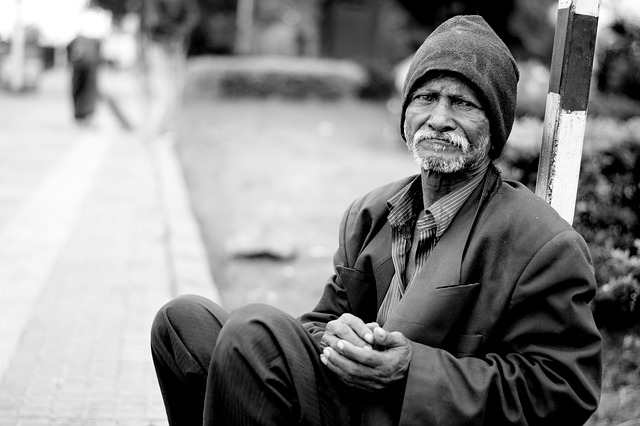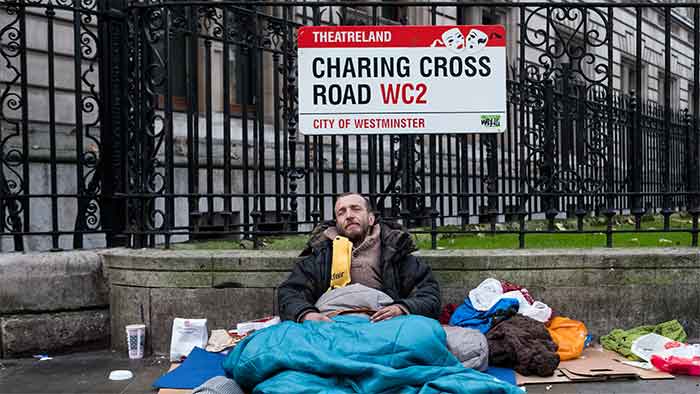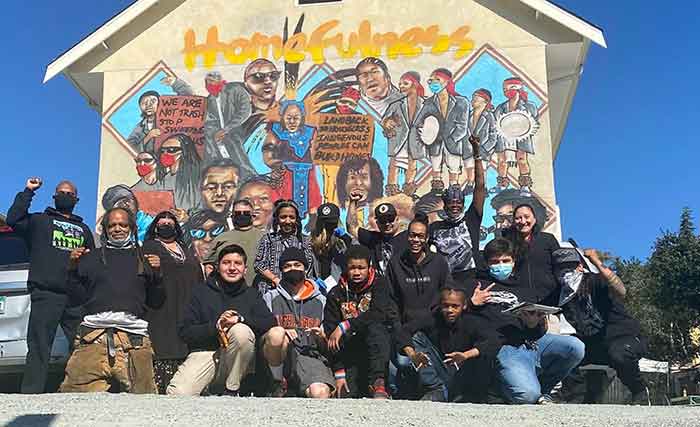
Nearly a quarter of a million people 55 or older are estimated by the government to have been homeless for at least part of 2019.
According to the Washington Post, “People 55 and older represented 16.5 percent of America’s homeless population of 1.45 million in 2019, according to the most recent reliable data.”
According to a 2022 University of Pennsylvania Study by Rebecca Brown, an Assistant Professor of Medicine in the Division of Geriatric Medicine at the Perelman School of Medicine, and several coauthors from the University of California San Francisco, over one-third of the homeless population are now single adults over 50, triple the figure in 1990 when it stood at 11 percent.
The government makes little effort to count the homeless. The Department of Housing and Urban Development, the only federal source of information on homelessness disaggregated by age, delayed its release of the second part of their Annual Homeless Assessment Report to Congress by two years, making it difficult to get an idea of the scale of homelessness among the elderly in real time.
The latest information on homelessness with respect to the elderly is from 2019, though advocates of the homeless have noted that there is evidence that it is growing, pointing to numerous examples.
The largest shelter provider in Arizona, Central Arizona Shelter Services (CASS), is rushing to open an over-55 shelter in a former Phoenix hotel this summer with “private rooms and medical and social services tailored for older people.” The provider says that it served 1,717 elderly in 2022, a 43 percent increase compared to 2021.
In Orange County, California, a Medicaid plan, CalOptima Health, is creating a 119-bed shelter which will serve as an assisted-living facility for the elderly, according to Kelly Bruno-Nelson, executive director for the plan. Bruno-Nelson stated that the current shelter system “cannot accommodate the physical needs of this population.” Seniors are staying in respite centers for months in San Francisco, California, Portland, Oregon, and Anchorage, Alaska, that were intended for a short-term stay only. In Boise, Idaho, shelter operators are hiring staff with backgrounds in long-term care to help elderly homeless living for long periods in hotels.
“It’s just a catastrophe. This is the fastest-growing group of people who are homeless,” said Dr. Margot Kushel, a professor of medicine and vulnerable populations researcher at the University of California at San Francisco.
Elderly homeless contract chronic diseases much earlier than younger people, as well as suffering from geriatric problems. Poor access to care due to homelessness, and the threat of having their medications stolen or going bad outside, stress from having to weather the outdoors, as well as generally unsanitary conditions, and the difficulties created by the anti-homeless laws being passed around the country, all contribute to poor health outcomes.
A Journal of the American Medical Association study titled, “Factors Associated With Mortality Among Homeless Older Adults in California: The HOPE HOME Study,” detailed how, over an average of 55 months, unhoused people over 50 years died at a rate 3.5 times greater than their housed counterparts. The findings are consistent with previous studies in other parts of the country.
Dennis Culhane, a professor and social science researcher at the University of Pennsylvania, said that the population of homeless seniors 65 and older would double or even triple from 2017 before peaking around 2030.
This increase is driven by poverty. One half of renters over 50 spend more than 30 percent of their household income on rent, according to the Joint Center for Housing Studies of Harvard University.
As the American Society on Aging Generations journal noted, “Low-income people who spend more than 30 percent of their income on rent are unable to save money, leaving them vulnerable to losing their housing when they face setbacks, such as a job loss, sickness, or death of a spouse or partner.”
In other words, homelessness is a class issue. The financial elite that both parties represent, and the upper middle class have no reason to worry about becoming homeless. The workers on the other hand, such as the homeless former autoworker that the Post interviewed, are the ones which this malady overwhelmingly affects.
Poverty, combined with the bipartisan destruction of the social safety net, spiraling inflation driven by profit-gouging (not wages) and the US-provoked war with Russia, as well as extortionary rent, are leading to thousands of the elderly being kicked out onto the streets.
The ruling class has no response to the increase in homelessness among the elderly. Indeed, hardly any media coverage is to be found on the topic. As it doesn’t fit into the categories of race or gender, the Democratic Party wing of the political establishment finds it more convenient to merely remain quiet on the topic.
The plans to attack Medicare and Social Security under the phony pretense of fighting debt, while dumping literally over a trillion dollars into American imperialism’s war machine—not to mention the nearly unlimited bailouts sunk into the pockets of the financial elite—shows the real disdain for the elderly.
If anything, the response given by the ruling elite is to step up the attacks on the elderly, foster reactionary sentiments against them (as a burden to society and the young), and ultimately to reduce life expectancy.
The corporate media has railed against the elderly, endorsing dying early. This was visible in the campaign for the pro-corporate health plan Obamacare (the Affordable Care Act) in which the New York Times spearheaded this narrative. The result of Obamacare was to contribute to a decrease in life expectancy. One of the chief architects of Obamacare, Dr. Ezekiel Emanuel, openly advocated for a reduction in life expectancy.
The aim of the ruling class is to extract as much profit from workers as possible while they are of working age and then for them to die quickly so they don’t subtract from profits and funds for warfare. Putting the elderly out on the streets will contribute to a higher mortality rate. It is another indication of the bankruptcy of capitalism that it is not just incapable of preserving life for the elderly, but actively hostile to it.
Originally published in WSWS.org














































